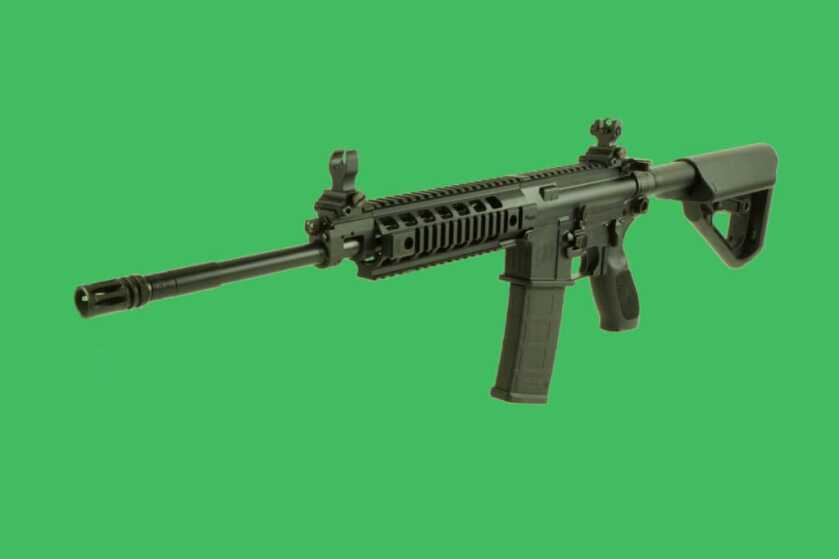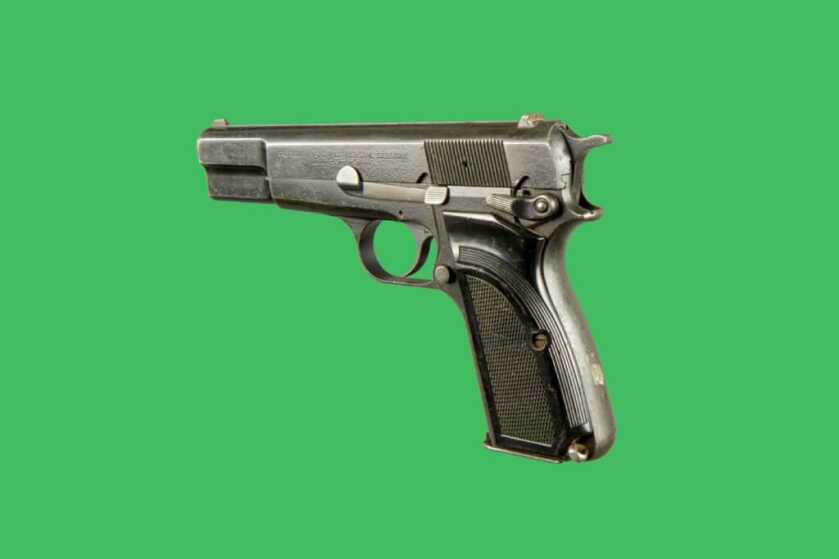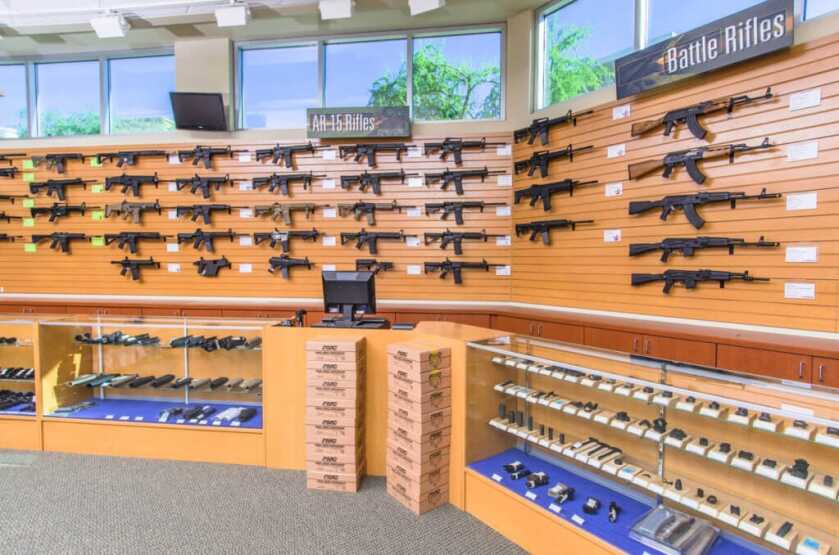To a person who has experience shooting many types of guns, choosing one for carry does not sound like a tough problem. But for someone who has little or no experience with guns, it can be hard to decide what gun to choose. And there are so many opinions and myths about guns, some of them just plain wrong, that it is easy to choose the wrong gun. What may be right for one person is a terrible choice for another.
Of course, before deciding to carry a gun, either openly or concealed, and to keep yourself out of trouble, make sure you know the laws in your area and whether or not they allow a gun to be carried.

The truth is that, if the law allows it, just about any gun can be carried and carried discreetly. It depends on a few factors like the size of the person carrying and how the gun is going to be carried. Most people don’t realize it, but they are perfectly capable of carrying a larger gun than they think they can carry. Still, it is common for a person to select the smallest, lightest weight gun they can find. And that may not be the best choice because small, lightweight guns are harder to shoot and manipulate.
Actually, a long gun, i.e., a rifle, carbine, or shotgun, can be carried if the law allows it. Doing so concealed though is very difficult and is probably not feasible for most people. And it’s probably not a good idea in our society to carry a long gun openly, even where lawful, because openly carrying one will look odd and out of place. It will make people nervous, even some who are comfortable carrying a gun discreetly.

By carrying any gun openly, you may arouse suspicion or alert people. And carrying openly may be asking for trouble. Someone with a bias against guns may call the police and allege that you pointed a gun at them – and they would be able to describe it to the cops. Or a crook might shoot you first because it is obvious you can defend yourself.
So people carry handguns concealed. They are easier to carry and conceal than a long gun. Given this fact, here we will concentrate on some of the things to consider when selecting a handgun. But before carrying, again make sure you know the laws in your jurisdiction and if those laws permit legal carry.
The handgun can be large or small. It can be a revolver or a semi-automatic. And if you discard the idea of a revolver because you think it is old technology, consider that the semi-automatic handgun dates back to the 1890s. So it’s not really that new either.

And a word of advice to those who might consider buying a gun for someone else, especially a spouse. A gun is a very personal item and the way it feels in the hand is very important to the person shooting it. You wouldn’t buy a pair of shoes for someone without letting them try the shoes on, would you? So let the other person pick out the gun and don’t argue with them. Sure, you can tell them the pros and cons of the gun or cartridge, but let them decide.
A good place to start is a gun store where the buyer can look at and touch a variety of guns before buying. First, the gun should be comfortable to hold. If it is, there is a greater chance that it will be comfortable to shoot. But the buyer won’t know for sure until he or she shoots it. So, it’s a good idea to find a gun shop with a range where sample guns can be tried before buying.

Another good idea to help eliminate some inherent problems with buying a gun for someone else is to give them a gift card and let them go to the shop and pick out the gun they want. That way they are also the one to go through the background check. It can help avoid legal problems like being accused of being a straw buyer which is illegal.
Keep in mind that larger guns are generally easier to shoot than small guns. The grip is larger. And with more weight, comes less felt recoil. Other things to consider are ease of manipulation which includes ease of loading a magazine and racking a slide. Does the gun have a manual safety or not? Is the gun double or single action? How easy is it to see the sights and align them with the target?
If a small semi-auto is chosen, there may not be much of a grip, making the gun harder to hold onto, and the slide may be so small that racking it may be difficult. And some semi-autos are so small these days that even though the reciprocating parts can help to reduce felt recoil, the recoil is still unpleasant. But even a revolver can be so small that recoil hurts, especially with magnum loads and a tiny grip.
Semi-automatics and revolvers have their own advantages and disadvantages. For example, a semi-auto is often slimmer and easier to hide, and it often has a higher capacity than a revolver. It is also faster to reload because it is magazine fed. And these days, improvements in ammunition have made even some smaller cartridges like the .380 ACP a viable choice for self-defense.
But before buying any gun, decide where on the body it will be carried. That can make a huge difference in what gun to get. The deeper concealment, generally the longer it will take to draw the gun and the more difficult it will be to do so. And consider that a gun with an exposed hammer spur is more likely to snag on clothing when drawn. Guns with a shrouded or hidden hammer, or no hammer spur, can help. And some guns have no hammer at all.

Buyers of handguns for self-defense are often overly concerned about accuracy. If the gun has fixed iron sights, then it is important that the sights are properly regulated and that the bullet strikes where the gun is aimed. If the sights are adjustable, then this is less of a problem because they can be regulated by the consumer. And generally speaking, if the handgun regularly prints groups of say three or four inches at 25 yards, it will be precise enough for self-defense where the target is large and close. But if more precision is needed, then perhaps a different gun should be considered.
Reliability is much more important than accuracy or precision in a self-defense gun. In fact, many experienced gun handlers argue that reliability is the most important characteristic in a self-defense gun. The gun must work every time the trigger is pulled. It is a life-saving device.
Although semi-autos are very reliable these days, they are still slightly more prone to a malfunction than a revolver. But clearing a semi-auto malfunction is usually much easier and faster than a revolver malfunction. Yes, revolvers do malfunction. It may be nothing more than a bad cartridge that does not ignite, in which case the solution is to pull the trigger again so the next cartridge is fired – if there is another fresh cartridge in the cylinder. But some revolver malfunctions are very time consuming to clear and also require a tool.

Revolvers do not experience feeding problems like semi-autos because each round is manually inserted into its chamber and does not have to be replaced with a fresh round for follow-up shots. And revolvers are less sensitive than a semi-auto to the type of ammo. Almost any cartridge of the correct designation can be fired in a revolver. Still, whatever the cartridge is that will be carried, it should be tested for function with the particular gun that will be carried, whether a revolver or semi-auto, before relying on it for self-defense. For example, some lightweight revolvers recoil so much and so fast that bullets can dislodge from the case and creep forward far enough to keep the cylinder from rotating. And removing those cartridges usually requires time and tools.
Small revolvers can generally chamber more powerful cartridges, like the .357 Magnum, than a semi-auto can, and the manual of arms is simpler so it takes less training to learn manipulation. On the other hand, reloading a revolver usually takes longer than reloading a semi-auto, and speed loaders, if they are used, are bulkier to carry than a semi-auto magazine is.

Trigger control is generally more difficult with a double action (DA) revolver than a semi-automatic, unless the semi has a traditional double action/single action (DA/SA) trigger. With the DA/SA trigger, the semi is usually carried with a round in the chamber and the hammer uncocked, or forward. To fire the gun, the first round requires a long, heavier trigger pull that cocks the hammer before releasing it to fly forward and strike the firing pin. Then the gun cycles, ejecting the spent cartridge, loading a fresh cartridge in the chamber and cocking the hammer. The next and subsequent shots require a shorter and lighter SA trigger pull.
With a DA/SA trigger, two different pulls have to be mastered. But revolvers have either a DA or SA trigger – some have both – so usually only one type of pull needs to be mastered. That makes it easier to learn trigger control. However, if the semi-auto trigger is the modern striker fired version where every trigger pull is the same each time and is relatively short compared to a DA pull, or the gun has only a SA trigger, the semi-auto trigger can be easier to master.
Again, revolvers and semi-autos both have their pros and cons. But what is important to one person, may not be important to another. So to help the prospective buyer make a decision, it can help for the buyer to get some training with different guns before making a purchase. And often an instructor will have a variety of guns that a student can try before deciding what gun to buy.
Regardless of the type of gun purchased, training at a good school like Gunsite or with a competent instructor is very important. Owning a violin or piano does not make a person a musician, and owning a gun does not make a person competent to protect a life with one.
And that’s the what and the why of it.

Self defense protection
My 1st criterion was safety. Every year we hear of someone (usually a trained police officer) dropping a striker-fired semi with a loaded round wounding or killing a civilian in a public place. My considered choice is a DAO with an empty chamber (Sig p250 .40), probably next safest to not packing at all. If I cannot spare 1 second to rack a round, my goose is cooked anyway.
There have been only isolated incidents of a striker pistol discharging from a drop and that was pretty much limited to the Sig P320, and to claim it happens “every year” and kills people in a public place is absolute exaggeration of the worst kind.
And I know that several ‘reported’ incidents turned out to be dishonest, people don’t like admitting they screwed up, it’s human nature.
Ten of thousands of Glocks, S&W’s, H&K’s and others are carried and used safely, and dropped I’m sure, without incident.
Bet you would have a cow if you knew someone carrying a 1911 type in ‘Condition1’.
“Not packing” is “safest” as long as you don’t NEED the gun, then it isn’t.
Self defense
Good article. I have several carry guns and have found that for myself (& my wife), how we carry is a very important factor, because, if we are not carrying comfortably, we are less likely to carry. For us, comfort is directly related to holster & belt selection. Unfortunately, holster selection can be a bit of a process. I have 3 drawers full of holsters that I don’t use. I tend to make my own holsters, now. For my wife, it is a little less complicated but still a process as she mostly carries off body, which bothers me a bit, and appendix carry. Not sure how to inject all this into a carry firearm selection other than to find a friend with a lot of guns and holster types and ask for help. You will probably find them very accomodating. BTW- my go to is a S&W 360PD in a OWB holster and Hanks belt- speed strip in pocket for additional ammo. Sig Sauer P365 is second choice. Have to wear a cover garment in warm weather. Beretta Pico in pocket holster for backup. Not enough space to enumerate all the other holster types (& carry configurations) I have and don’t use on a regular basis.
David: Thanks for reading and commenting. Excellent points that you make. Well thought out comment. It’s a big subject and space is limited. A book could probably we written on the subject.